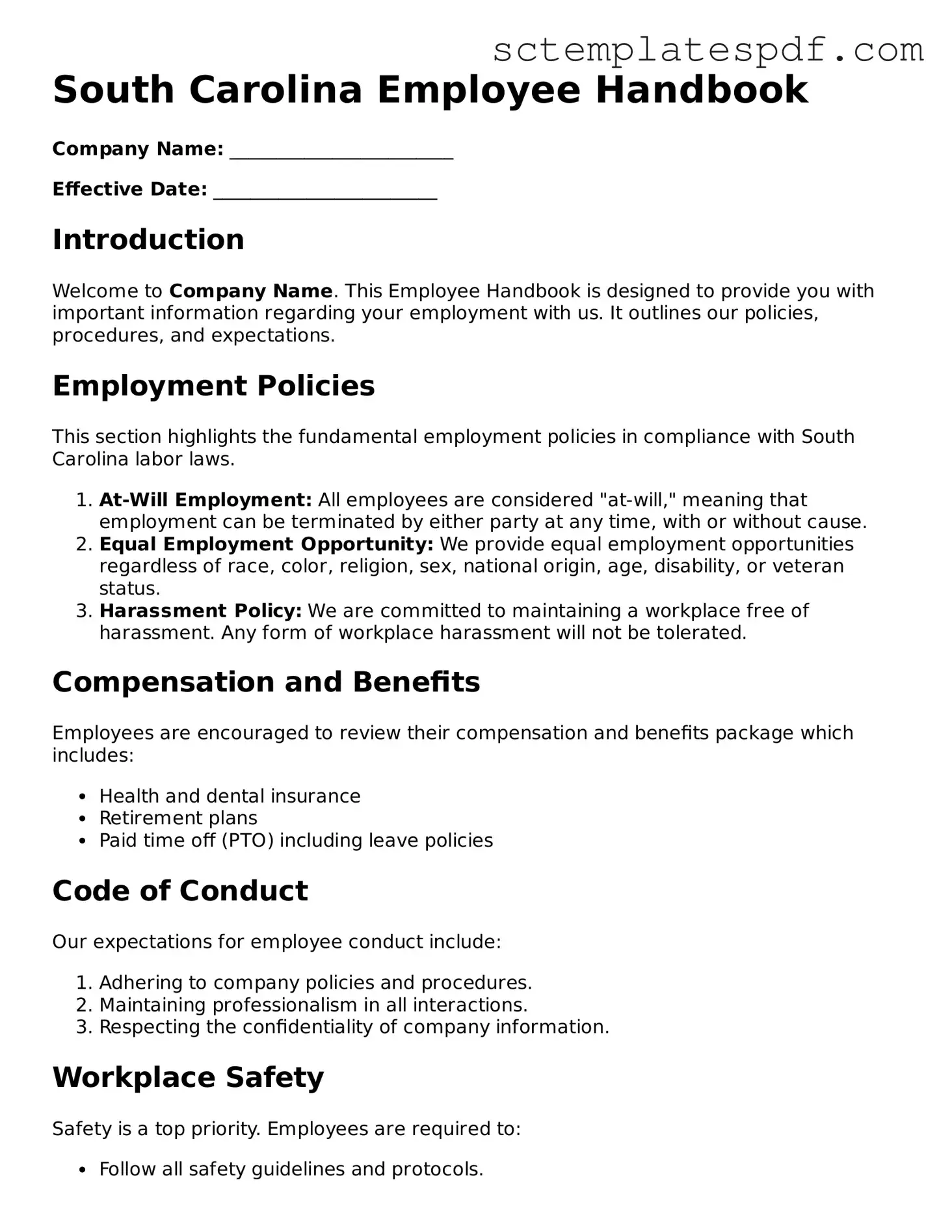Valid South Carolina Employee Handbook Document
The South Carolina Employee Handbook form is a vital document that outlines workplace policies, employee rights, and responsibilities within a company. This form serves as a guide for both employers and employees, ensuring clarity and compliance with state laws. To ensure your business is well-prepared, consider filling out the form by clicking the button below.
Fill Out Your Employee Handbook
